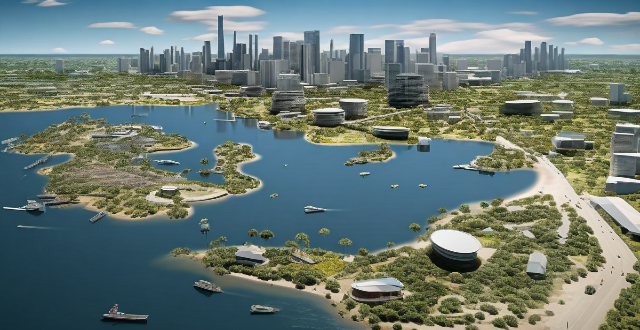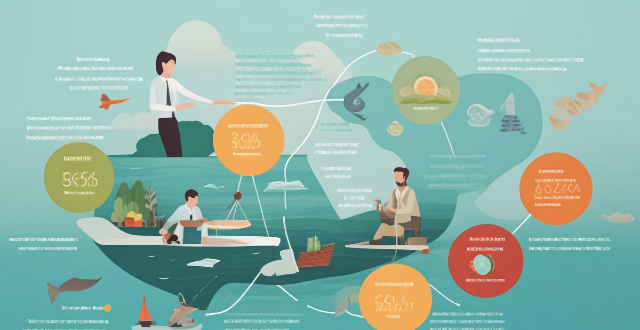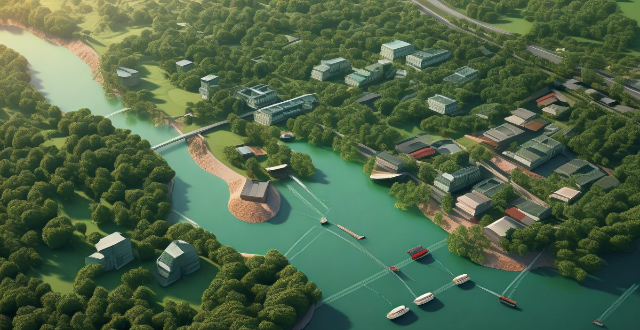Temperature Heat

What is the relationship between heat waves and mortality rates ?
The text discusses the relationship between heat waves and mortality rates, highlighting various factors that contribute to this complex relationship. It emphasizes the increased risk of heat-related illnesses like dehydration, heat exhaustion, and heat stroke during heat waves, which can lead to serious complications and death if not treated properly. The article also notes the impact of heat waves on chronic health conditions like cardiovascular disease, respiratory problems, and diabetes. Age-related vulnerabilities are discussed, with older adults being particularly susceptible due to physiological changes and a higher prevalence of chronic health conditions. Socioeconomic factors are identified as crucial determinants of an individual's vulnerability to the adverse effects of heat waves, including housing quality, healthcare access, education level, and employment status. The text concludes by stressing the importance of public health strategies aimed at reducing the impact of heat waves on vulnerable populations.

How can I identify and respond to signs of heat exhaustion or heatstroke ?
Heat exhaustion and heatstroke are two serious conditions that can occur when the body overheats, often due to prolonged exposure to high temperatures and dehydration. Recognizing the symptoms of each is crucial for timely treatment. Heat exhaustion symptoms include heavy sweating, weakness, dizziness, nausea, muscle cramps, pale skin, headache, confusion, and rapid heartbeat. Heatstroke signs involve fever, altered mental state, hot dry skin, rapid breathing, racing heart rate, nausea and vomiting, severe headache, and possibly seizures. Immediate action is required: for heat exhaustion, move to a cooler area, hydrate, cool down, and rest; for heatstroke, call emergency services, move to shade, lower body temperature, lighten clothing, stay hydrated, and monitor vital signs. Prevention involves avoiding strenuous activities during peak heat, wearing appropriate clothing, staying hydrated, and recognizing personal limits.

How does temperature control affect food safety ?
This text discusses the impact of temperature control on food safety, emphasizing the risks associated with improper temperature management and the benefits of maintaining appropriate temperatures. It highlights the danger zone for bacterial growth, spoilage due to mold and yeast, and toxin production from bacteria. The article also outlines best practices for temperature control in refrigeration, freezing, cooking, reheating, handling, and storage to ensure food safety.

How do urban greening projects influence city temperatures and heat islands ?
Urban greening projects, such as planting trees and creating parks, can help reduce city temperatures and mitigate the effects of urban heat islands. These projects provide shade, reduce heat absorption by buildings and roads, and promote evapotranspiration, all of which contribute to cooler city environments. By increasing vegetation in cities, urban greening initiatives can also help reduce the intensity of urban heat islands, making cities more comfortable for residents. As our world continues to urbanize, prioritizing urban greening initiatives is essential for creating healthier and more sustainable cities for future generations.

Why is temperature control important in food storage and preparation ?
Temperature control is crucial in food storage and preparation to ensure safety, quality, and longevity of food products. It prevents bacterial growth, avoids toxin production, maintains flavor and texture, preserves nutrients, extends shelf life, reduces waste, saves energy, and reduces environmental impact. Proper temperature control helps to enjoy delicious and healthy meals while minimizing the risk of foodborne illnesses and food waste.

What are the long-term implications of neglecting climate adaptation efforts ?
Neglecting climate adaptation efforts can have far-reaching and long-lasting implications for our planet, its ecosystems, and human societies. These implications are multifaceted and interconnected, affecting various aspects of life on Earth. Below, we will explore some of the key long-term implications in detail: ### **Environmental Consequences** #### *Loss of Biodiversity* - **Habitat Destruction**: Rising temperatures and changing weather patterns can disrupt habitats, leading to a decline in biodiversity. - **Species Extinction**: Some species may not be able to adapt quickly enough to the changing conditions, resulting in extinction. #### *Ocean Acidification* - **Marine Ecosystems**: Increased carbon dioxide levels in the atmosphere lead to ocean acidification, which harms marine life, especially shellfish and coral reefs. ### **Economic Impacts** #### *Agriculture and Food Security* - **Reduced Crop Yields**: Changes in temperature and precipitation patterns can negatively affect crop yields, leading to food scarcity and price hikes. - **Livestock Production**: Heat stress and changes in feed quality can impact livestock production, further exacerbating food security issues. #### *Infrastructure Damage* - **Coastal Erosion**: Rising sea levels can cause coastal erosion, damaging infrastructure such as roads, buildings, and energy facilities. - **Extreme Weather Events**: More frequent and severe weather events like hurricanes, floods, and droughts can cause significant damage to infrastructure and lead to costly repairs. ### **Social and Health Impacts** #### *Displacement and Migration* - **Climate Refugees**: As living conditions deteriorate due to climate change, people may be forced to leave their homes, leading to mass migration and potential conflicts over resources. - **Urbanization**: People may move to cities seeking better living conditions, which could strain urban infrastructure and services. #### *Health Risks* - **Heat-related Illnesses**: Higher temperatures can lead to heat stroke, dehydration, and other heat-related illnesses. - **Spread of Diseases**: Warmer temperatures can expand the range of disease-carrying organisms like mosquitoes and ticks, increasing the risk of diseases like malaria, dengue fever, and Lyme disease. ### **Summary** Neglecting climate adaptation efforts has far-reaching consequences that extend beyond environmental degradation to include economic instability, social unrest, and public health risks. It is crucial for governments, businesses, and individuals to take proactive steps towards climate adaptation to mitigate these long-term implications and ensure a sustainable future for all.

What is the ideal room temperature for optimal sleep ?
The ideal room temperature for optimal sleep is between 60-67°F (15-19°C). This range is considered to be the most conducive for a comfortable and restful sleep. The reasons for this include regulation of body temperature, improved REM sleep, reduced wakefulness, and comfort and relaxation. To achieve the ideal room temperature, consider using an air conditioner or fan, adjusting your bedding, dressing appropriately, and using a programmable thermostat.

In what ways do urban heat islands influence city planning and design ?
Urban heat islands, areas within cities that are significantly warmer than surrounding rural areas, have a significant impact on city planning and design. This phenomenon is primarily due to the concentration of buildings, pavements, and other infrastructure that absorb and retain heat. The impact of urban heat islands extends beyond just temperature differences, influencing various aspects of city planning and design. These include increased energy consumption, public health concerns, water management, green spaces and landscaping, transportation planning, building materials and construction techniques, community design and zoning, climate change adaptation, and public awareness and education. Addressing these challenges requires a multifaceted approach that considers energy efficiency, public health, water management, green spaces, transportation, building materials, community design, climate change adaptation, and public awareness. By taking these factors into account, cities can become more livable, sustainable, and resilient in the face of rising temperatures.

How do different ecosystems respond to changes in temperature and precipitation patterns ?
This article discusses the impacts of changes in temperature and precipitation patterns on different ecosystems, including forests, grasslands, wetlands, and arctic tundra. It highlights how these changes can affect plant growth and productivity, species composition, water availability, nutrient cycling, soil erosion, and other ecosystem processes. The article also emphasizes the importance of understanding these impacts to inform conservation and management strategies for ecosystems in a changing climate.

What are some examples of recent technological advancements in renewable energy sources ?
Renewable energy sources have been gaining momentum in recent years due to the increasing awareness of climate change and the need for sustainable alternatives to fossil fuels. Here are some examples of recent technological advancements in this field: - Solar Energy: Perovskite solar cells, bifacial solar panels, concentrated solar power (CSP) systems with efficient heat transfer fluids and storage systems. - Wind Energy: Floating wind turbines designed for deep waters, smart grid integration with improved forecasting techniques, demand response programs, and energy storage solutions. - Hydropower: Run-of-river systems that minimize environmental impact by utilizing natural river flow, low head hydropower installed in existing water infrastructure without significant modifications. - Geothermal Energy: Enhanced geothermal systems (EGS) with improved drilling techniques and efficient heat exchangers, low-temperature geothermal heat pumps harnessing warmth from Earth's surface even in colder climates. - Biomass Energy: Anaerobic digestion process breaking down organic matter to produce biogas for electricity generation or as a natural gas substitute, torrefaction converting biomass into coal-like substance called biocoal with higher energy density and potential applications in replacing coal in power plants and industrial processes.

Hwinfo, a hardware monitoring tool, released version 6.42: improve accuracy and support RTX 30 series partial video memory temperature monitoring

What are the implications of not meeting climate targets ?
The article discusses the implications of not meeting climate targets, including rising sea levels leading to coastal erosion and loss of habitat; extreme weather events causing heatwaves and storms; biodiversity loss resulting in species extinction; economic disruption due to disaster recovery costs and loss of productivity; health impacts such as heat-related illnesses and air quality issues; food security concerns from reduced crop yields and water scarcity; and displacement and migration caused by climate change. It emphasizes the importance of meeting climate targets to mitigate these adverse effects on the environment, economy, and society.

Are permanent magnet motors more susceptible to damage from high temperatures compared to other motor types ?
Permanent magnet motors are more susceptible to high temperatures due to demagnetization and thermal expansion issues, compared to induction motors and switched reluctance motors which primarily face insulation degradation and material fatigue respectively.

What factors affect the performance and lifespan of a power battery ?
The performance and lifespan of a power battery are influenced by various factors, including charging habits, discharge rates, temperature conditions, mechanical stress, age, quality of the Battery Management System (BMS), and chemical composition. Overcharging or undercharging can lead to reduced lifespan due to heat buildup or memory effect, respectively. High discharge rates and deep depths of discharge can stress the battery and shorten its longevity. Temperature extremes and fluctuations affect efficiency and stability, while mechanical impacts and vibrations can cause physical damage. Aging is an inevitable factor, but a well-designed BMS can mitigate many issues related to charge and temperature control. Different chemical compositions also play a role in stability and lifespan characteristics. Proper care and management are essential for optimizing battery performance and extending its lifespan.

What role does global warming play in climate predictions ?
The text discusses the role of global warming in climate predictions, emphasizing its multifaceted impact on various aspects of the Earth's climate system. Key points include increased temperatures leading to melting ice, rising sea levels, and changes in precipitation patterns; intensified extreme weather events like heat waves and hurricanes; ocean acidification harming marine life; alterations in ecosystems affecting animal migration and habitats; agricultural impacts such as changing crop yields and growing seasons; and human health concerns including the spread of diseases and heat-related illnesses. The conclusion stresses the importance of considering these factors in future climate projections and mitigating the effects of global warming through reduced greenhouse gas emissions.

How does climate change impact the nutritional value of crops ?
Climate change is affecting the nutritional value of crops by altering CO2 levels, temperature fluctuations, and water availability. Elevated CO2 concentrations can lead to nutrient dilution in staple crops like wheat, rice, and soybeans. Temperature extremes cause protein denaturation and interfere with enzyme function, reducing nutrient content. Water stress from drought or flooding impairs nutrient uptake and synthesis. Adaptation strategies include breeding resilient crop varieties, implementing efficient irrigation systems, and using protective structures against extreme temperatures. By addressing these challenges, it's possible to maintain crop nutrition amidst climate change impacts.